Asus Zenfone 8 Flip review
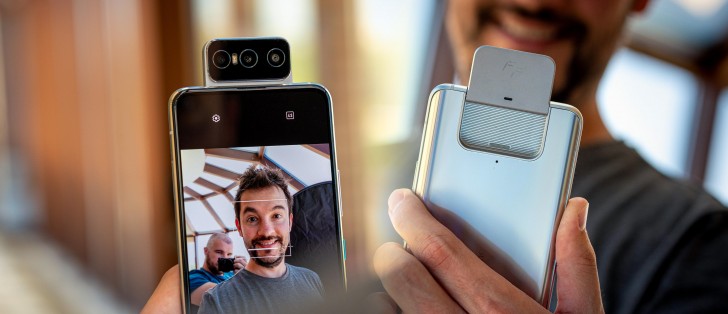
Daylight samples
Main camera
Not much has changed since the previous iteration of the phone. Daylight shots are still excellent, with a high level of detail and looking extra sharp. In fact, the foliage looks sharper than before, and so do the buildings in the distance. The dynamic range is wide enough to keep the highlights and shadows balanced. Colors are vivid, and yet, Asus keeps it somewhat within a reasonable range of accuracy.
Even the slightest drop in light results in added noise and loss of detail. Take a look at the couch and the furniture and the carpet on one of the indoor samples - detail from the fabric is non-existent. Getting close to the subject yields good results, though.
And kudos to the camera for pulling off the challenging shots of the two cats where the light is anything but ideal.
We did some direct comparison with the Asus Zenfone 7 Pro as well and as we already mentioned above, there is hardly any difference except how colors are rendered.






Main camera shootout: 8 Flip • 7 Pro






Main camera shootout: 8 Flip • 7 Pro
Shooting in the full 64MP resolution is possible, and these photos look pretty good. If you are mostly after detail, you get that in abundance, but the HDR algorithm seems to be disabled in this mode, so well-lit sceneries are recommended. Zooming aggressively will uncover some of the noisy patches in photos, too.
Telephoto camera
The telephoto unit's processing gets pretty close to that of the main camera but since it lacks resolution, sharpness and detail aren't impressive. At least when compared to full-fledged flagships. The HDR is doing a really good job, on the other hand, and color reproduction seems to be in line with the main camera's. Indoor shots do get a bit noisier, but there isn't a noticeable deterioration in overall quality.
In comparison to the Zenfone 7 Pro, we'd say the cameras are again identical with the most noticeable difference being color reproduction and the slightly more accurate exposure on the 8 Flip.








Telephoto camera shootout: 8 Flip • 7 Pro
Ultrawide camera
As expected, the ultrawide camera isn't stellar, but it's also not far behind your average ultrawide camera for the class. Even though it's 12MP, it leaves much to be desired in terms of sharpness and detail. Color reproduction, dynamic range and lens correction are all giving us a reason to rate the camera higher, not to mention there's no obvious color fringing, which is often an issue with ultrawide snappers.
Again, image quality is identical between the Zenfone 8 flip and the outgoing model.









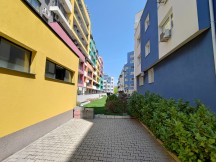
Ultrawide camera shootout: 8 Flip • 7 Pro
Low-light samples
Using the default Photo mode for nighttime shooting probably won't give you the desired results as photos are often noisy, soft and can sometimes lack contrast. Light sources and highlights are often clipped, showing a tendency for brighter exposure, which also explains the bright and detailed shadows. And by detailed, we mean that you can clearly see what's going in there, but it's often ruined by grain and fuzziness. The noise reduction algorithm often washes away some detail, too.
Still, the new software seems to be doing a better job than before for low-light photography. At least as far as sharpness and fine detail are concerned. You can see a noticeable improvement in dynamic range and contrast too.












Low-light shootout: 8 Flip • 7 Pro
Switching on the Night mode gives you a toggle with two options - 4 and 6 seconds of simulated exposure. Going for the second option is advisable if you have the opportunity. It produces considerably clearer images and resolves more fine detail. And depending on the scene, the software may go for a brighter exposure too, brightening up the scene quite a bit.
No matter which of those two modes you select, as long as you use the Night mode, you will see a considerable improvement in sharpness, noise, detail, contrast and dynamic range. The noise in the shadows is removed without sacrificing fine detail. Light sources look more balanced and well-contained. Nevertheless, we would like to stress that going for the longer exposure is advisable for the best possible results. In fact, with this 6s toggle, we can say definitely say that the Zenfone 8 Flip has one of the best Night modes in town.
Interestingly enough, comparing the Night modes of both handsets produces interesting results, to say the least. The two phones often trade blows, but perhaps the Zenfone 7 Pro comes out on top, at least when it comes to the standard 4 seconds exposure. Another thing to note here is that the older Zenfone prefers warmer white balance too.












Night mode shootout: 8 Flip • 7 Pro
Even though the 7 Pro seems to be more consistent with its shooting, the Zenfone 8 Flip is still a pretty good night shooter. Perhaps a future update would fix some of the small issues we outlined.
Telephoto camera
Unlike some phones, the Zenfone 8 Flip prioritizes its actual telephoto camera for night shots instead of cropping from the main sensor. In any case, the end result isn't stellar. There's plenty of grain in the sky and on uniform backgrounds. Understandably sharpness and detail are lacking too and sadly, there's no Night mode that can save the telephoto camera here.
Compared to the Zenfone 7 Pro, the 8 Flip doesn't bring any improvements over its predecessor.




Low-light telephoto shootout: 8 Flip • 7 Pro
Ultrawide camera
As one would expect, the ultrawide unit is no match for the harsh low-light conditions. Images taken with this camera are often fuzzy, almost looking out of focus, and super noisy.
Luckily, there's a Night mode that can save your nighttime ultrawide shots. It introduces much-needed sharpness into the scene, resolves considerably more detail and restores the highlight/shadows balance. Noise is hard to see too.
Put against the Zenfone 7 Pro, we see little to no difference, no matter if its the standard Photo mode or Night mode when using the ultrawide camera. Safe to say there are no changes in the ultrawide unit's processing.

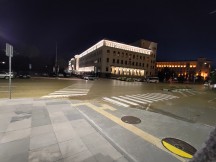








Low-light ultrawide shootout: 8 Flip • 7 Pro

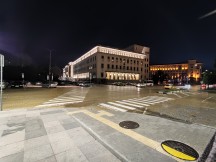







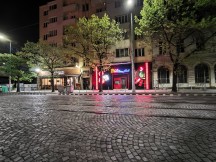
Night mode ultrawide shootout: 8 Flip • 7 Pro
Get ready for some more pixel-peeping with our photo compare tool to see how the Asus Zenfone 8 Flip compares to its rivals.



Asus Zenfone 8 Flip vs Samsung Galaxy S21+ 5G and the OnePlus 9 Pro in our Photo compare tool
Portraits
Interestingly, the software crops from the main camera when shooting portraits, and there's no way to turn it off. The portraits are upscaled back to 16MP, though, but there is some level of zoom. As far as quality is concerned, the phone captures some fine portraits with convincing faux bokeh. Even in more challenging conditions, the software manages to keep the subject's face exposed and balanced. Some noise starts to creep in when there's not sufficient light but can be noticed only if you zoom enough (take a look at the second picture).
Overall, portraits look great and edge detection works (almost) flawlessly.
Selfies
Having three proper cameras that can be used for selfies is a game-changer for all of you selfie lovers. It's needless to say that the telephoto won't be of much use in this case, especially with its 3x zoom. Anyway, the selfies taken with the main camera are hard to match, no matter the lighting conditions. You get sharp-looking selfies and detail isn't missing even in more challenging scenes. The subject's skin tone is a bit on the pale side but still manages to capture that natural reddish glow. Dynamic range is excellent.










Selfies: Normal • Ultrawide • Normal • Ultrawide • Normal • Ultrawide
Shooting with the ultrawide camera will understandably produce softer-looking images but compared to competing phones with dedicated ultrawide selfie units, the Zenfone 8 Flip blows everyone out of the water. The main advantage of the current setup, however, remains and that's the autofocus. That's a rare feature on selfie cameras so not having to worry about focusing distance in your selfies is a big deal.
Having a proper camera setup for selfies ensures good selfies even in extreme conditions. The dedicated Night mode can help with that too. We took a couple of Night mode selfies to see what's up, and we were delighted with the results. It would be unrealistic to expect crisp images in such conditions, but the software manages to get the most out of the situation. Despite the subject's softness, the face is always well exposed and some fine detail can be spotted throughout all scenes too. The ultrawide struggles in these situations but it's still fairly usable.



Main camera Night mode selfies


Ultrawide camera Night mode selfies
Video recording
Just like every flagship nowadays, the Zenfon 8 Flip supports up 8K (7680x4320) video recording, which in this case is even electronically stabilized. There's also the dedicated action camera-like video recording mode called HyperSteady but this one caps at 1080p@60fps.
The 8K video is looking nice. It has the detail, noise is virtually non-existent, contrast is great, colors are vivid, yet not over the top.
The same applies to the 2160p, except for the choppiness. And even though the 4K video has a lower resolution, it's hard to tell the difference between 8K and 4K even when zooming. Excellent sharpness here.
We were pleasantly surprised by the ultrawide camera's video recording. The sample video looks in line with the main camera's videos in terms of processing and it's plenty sharp for an ultrawide too.
As we already mentioned, the HyperSteady video mode is capped at 1080p and to further enhance that action camera-like feel, the frames per second are 60 by default. This video mode provides super smooth video capture with minimal decrease in quality (for a 1080p video, that is) but some sudden adjustments of the frame can be seen. Panning looks rather smooth too, though. Still, we've seen better stabilization from competitors. This may change with a future update if Asus resolves the strange sudden adjustment behavior.
Since the phone supports stabilized 8K videos, we couldn't miss the opportunity to find out. Especially on a windy day to test the wind filters too. We flipped the wind cancelation switch and it seems to be definitely something more than just a gimmick. Wind noise is, for all intends and purposes, gone. However, the mics in this mode seem to be pretty sensitive and pick up noise from afar.
And as far as stabilization goes, it looks okay for the most part except for the shaky effect that occurs with some sudden movements. Give it one more generation. For now, we recommend sticking to the 4K EIS video mode, it's looking really good. Which leaves us to our next set of videos.
Asus markets the phone as an ideal entry-level vlogger device and it's hard to deny that. Expect some crisp and colorful selfie videos, which are also well-stabilized.
The same can be said about the ultrawide camera and despite clipping some parts of the bright background, the subject's face gets the correct exposure.
Once you are done with the real-world examples, take a closer look at our video compare tool to see how the Asus Zenfone 8 Flip stacks against the competition.



2160p: Asus Zenfone 8 Flip vs Samsung Galaxy S21+ 5G and the OnePlus 9 Pro in our Video compare tool
Reader comments
- Anonymous
- 05 Nov 2024
- kZj
What is an "APN setting"?
- JimB
- 29 Jun 2024
- kZj
I just bought a ZenFone 8 flip in June 2024. The major reasons I bought this were two: 1. It has a microSD card slot, a feature that turns out was rapidly going away in many main smartphone lines during 2020 and beyond. 2. The second reason w...







































